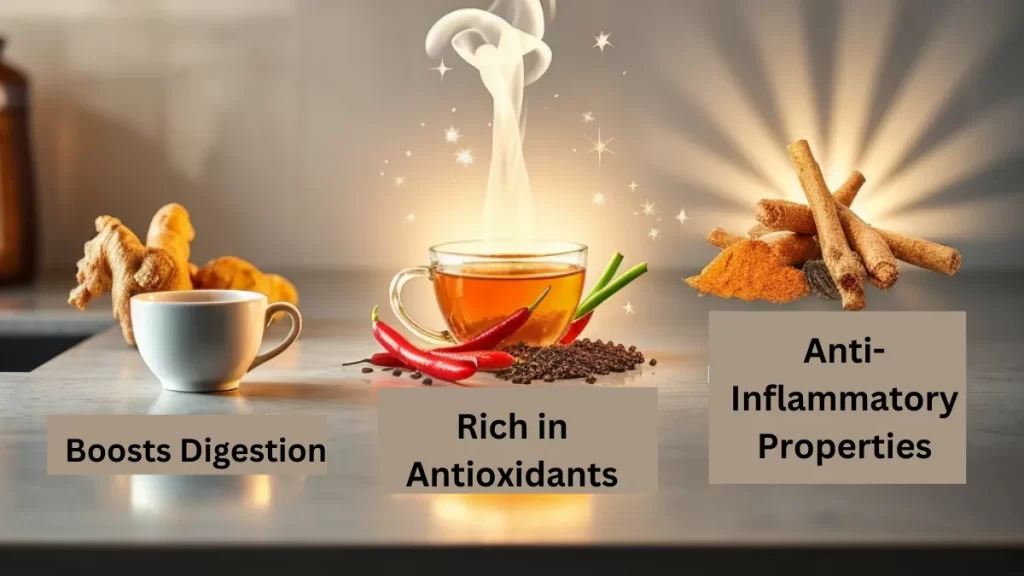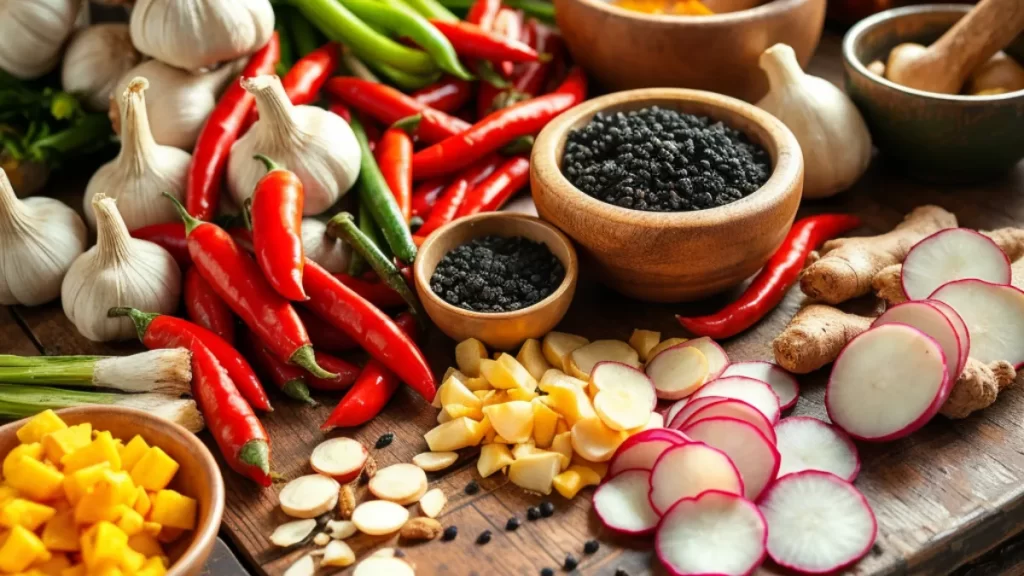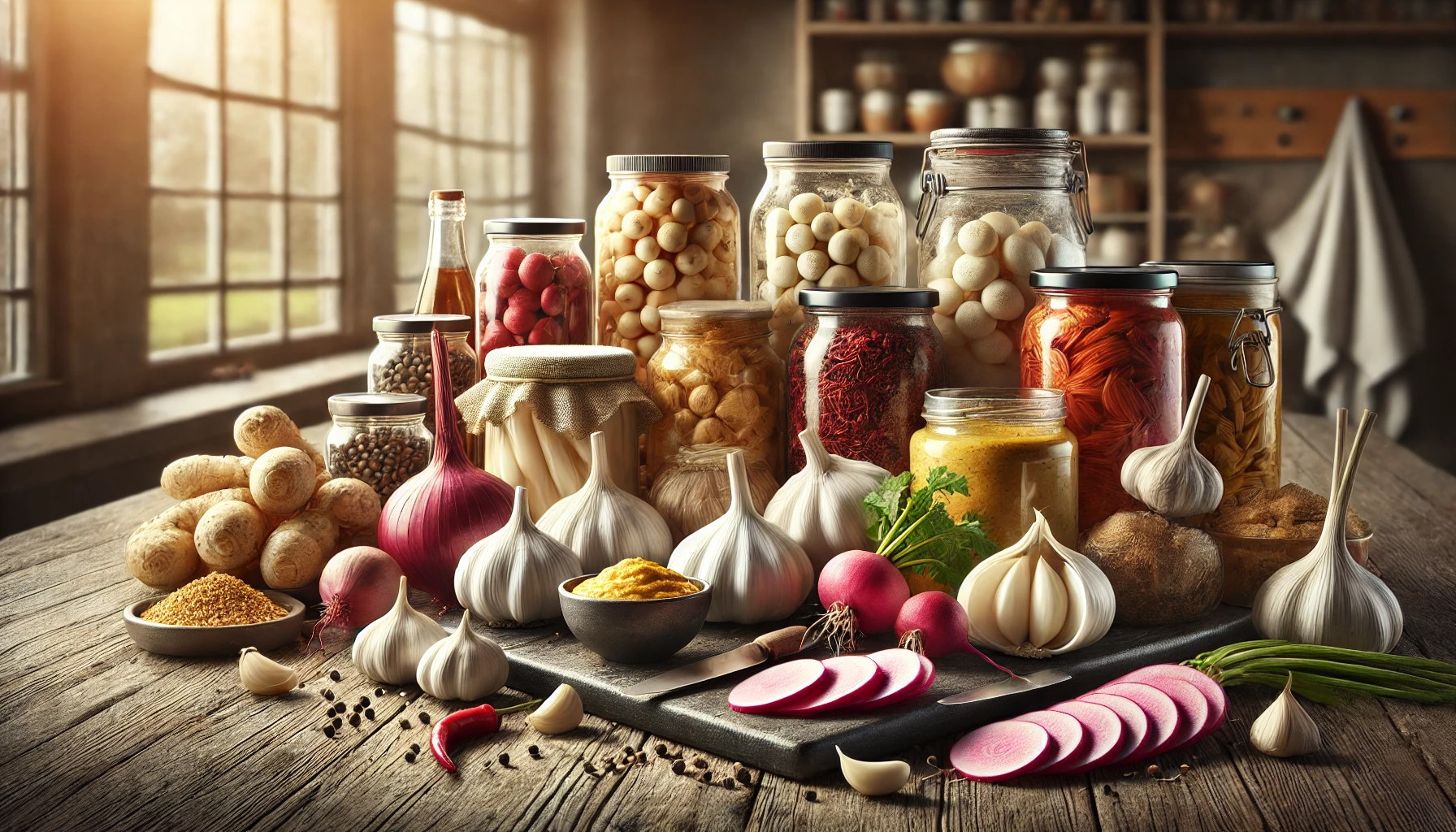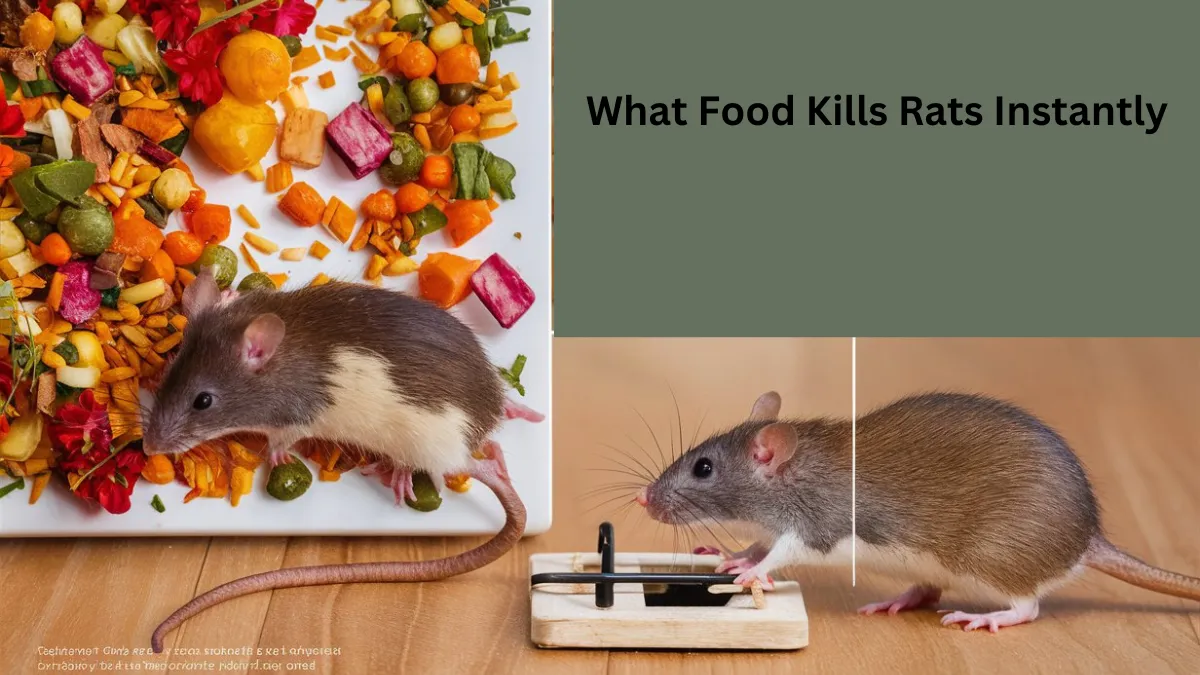Table of Contents
Food flavors can be as diverse as those who enjoy them. However, a particular food category stands out for its strong, often intense aromas and tastes. These are the foods we describe as “pungent.” So, what types of foods are considered pungent? This article will explore the world of pungent foods, discover their bold flavors, and reveal the latest exciting updates. Prepare yourself for a tasty adventure!
What Types of Foods Are Considered Pungent? What Does Pungent Mean in Food?
Before exploring specific foods, it’s essential to understand what “pungent” means in the culinary world. Pungent is a strong, sharp, spicy taste or smell that can sometimes be overwhelming. These foods stimulate the senses and often leave a lasting impression. The pungency of food is due to compounds that can trigger a reaction in the taste buds and the nose, making them memorable and distinctive.
What Types of Foods Are Considered Pungent?: Common Types of Pungent Foods
Now that we know what pungent means, let’s explore what foods are considered pungent. These foods span across various cuisines and have been enjoyed for centuries. A list of some of the more well-liked kinds can be seen below:
Garlic – The Classic Pungent Powerhouse
Garlic is the most well-known pungent food. Its intense aroma is easily recognized. When raw, its taste is sharp and biting, but when cooked, it mellows into a warm, rich flavor. Garlic is used in countless dishes worldwide, from Italian pasta sauces to Asian stir-fries, making it a staple in many kitchens.
Onions – A Staple with a Kick
Onions are another pungent food widely used in cooking. When sliced, onions release sulfur compounds that give them their sharp, sometimes tear-inducing smell. Cooking onions can reduce their pungency, but raw onions retain a powerful kick that can elevate salads, sandwiches, and salsas.
Ginger – A Spicy and Warming Root
Ginger is a root known for its spicy and warming flavor. It’s a common ingredient in Asian cuisine, adding a pungent kick to dishes like stir-fries, soups, and marinades. Ginger’s pungency comes from compounds called gingerols, which can also provide health benefits like reducing inflammation and aiding digestion.
Mustard – The Spicy Condiment
Mustard, made from the seeds of the mustard plant, is a condiment that brings a pungent punch. Its sharp, spicy flavor can vary from mild to intense, depending on the type of mustard seeds and the preparation method. Mustard is often used in sandwiches, dressings, and as a marinade for meats, adding a bold flavor to many dishes.
Radishes – A Crisp and Peppery Vegetable
Radishes are crisp, refreshing vegetables with a distinctive peppery flavor. This pungent food is often used in salads, adding a crunchy texture and a spicy bite. The pungency of radishes is more subtle than garlic or onions but still noticeable enough to make an impact.
What Types of Foods Are Considered Pungent: The Health Advantages of Pungent Foods

Eating pungent foods isn’t just about experiencing bold flavors; it also has several health benefits. These foods often contain compounds that can promote better health, making them a great addition to any diet.
Boosts Digestion
Many pungent foods, like ginger and garlic, are known to aid in digestion. They stimulate the production of digestive enzymes and can help relieve indigestion, bloating, and gas. Including these foods in your diet can promote a healthier digestive system.
Rich in Antioxidants
Pungent foods are often rich in antioxidants, which help protect the body from oxidative stress and free radical damage. For example, garlic is packed with allicin, a powerful antioxidant that supports immune health and reduces the risk of chronic diseases.
Anti-Inflammatory Properties
Some pungent foods, such as ginger and turmeric, have strong anti-inflammatory properties. These foods can help reduce inflammation linked to chronic conditions like arthritis and heart disease. Including pungent foods in your diet can contribute to overall well-being.
Also Read: What Food Groups Are in a Burrito? Discover the Surprising Combo!
What Types of Foods Are Considered Pungent: How to Incorporate Pungent Foods into Your Diet

If you’re intrigued by pungent foods and want to incorporate them into your diet, there are plenty of ways.
Spice Up Your Cooking
Use pungent foods like garlic, onions, and ginger in everyday cooking. These ingredients can enhance the flavor of almost any dish, from soups and stews to marinades and dressings. Try out various recipes to see what combinations work best for you.
Add Them to Salads and Sandwiches
Raw, pungent foods like onions and radishes can add a refreshing crunch and spice to salads and sandwiches. They’re a great way to introduce bold flavors without overpowering the dish.
Use as Condiments
Pungent condiments like mustard can elevate the flavor of your meals. Spread mustard on sandwiches, mix it into dressings, or use it as a marinade for meats to enjoy its sharp, spicy taste.
What types of foods are considered pungent? The answer lies in the rich, diverse flavors they bring to your table. Incorporate these foods into your diet not only for their taste but also for their health benefits. So, the next time you cook, don’t shy away from the bold flavors of pungent foods—embrace them and discover a new world of taste!




